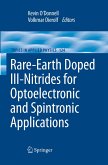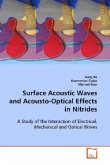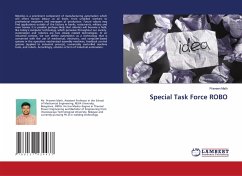III-Nitrides are used in wide range of electrical and optical products and applications including LEDs, LASERs, transistors, etc. However, they suffer from polarization fields when grown crystallographically along the c-direction. These fields result in poor carrier recombination efficiencies in quantum wells and shift in emission wavelength caused by QCSE due to spatial separation of the electron and hole wavefunctions. It is possible to eliminate these effects by growing along the nonpolar directions, so that the polarization fields are normal to the growth direction. However films grown along these nonpolar directions suffer from high defect densities. Consequently, device structures grown with these orientations suffer from poor electrical and optical characteristics. In this book these two issues were addressed so as to eliminate the polarization fields by nonpolar growth and to effectively reduce the high defect densities in films grown along the nonpolar directions employing a new growth technique called SLEO. Using this method it is possible to improve device performances with significantly higher external quantum efficiency.
Bitte wählen Sie Ihr Anliegen aus.
Rechnungen
Retourenschein anfordern
Bestellstatus
Storno








